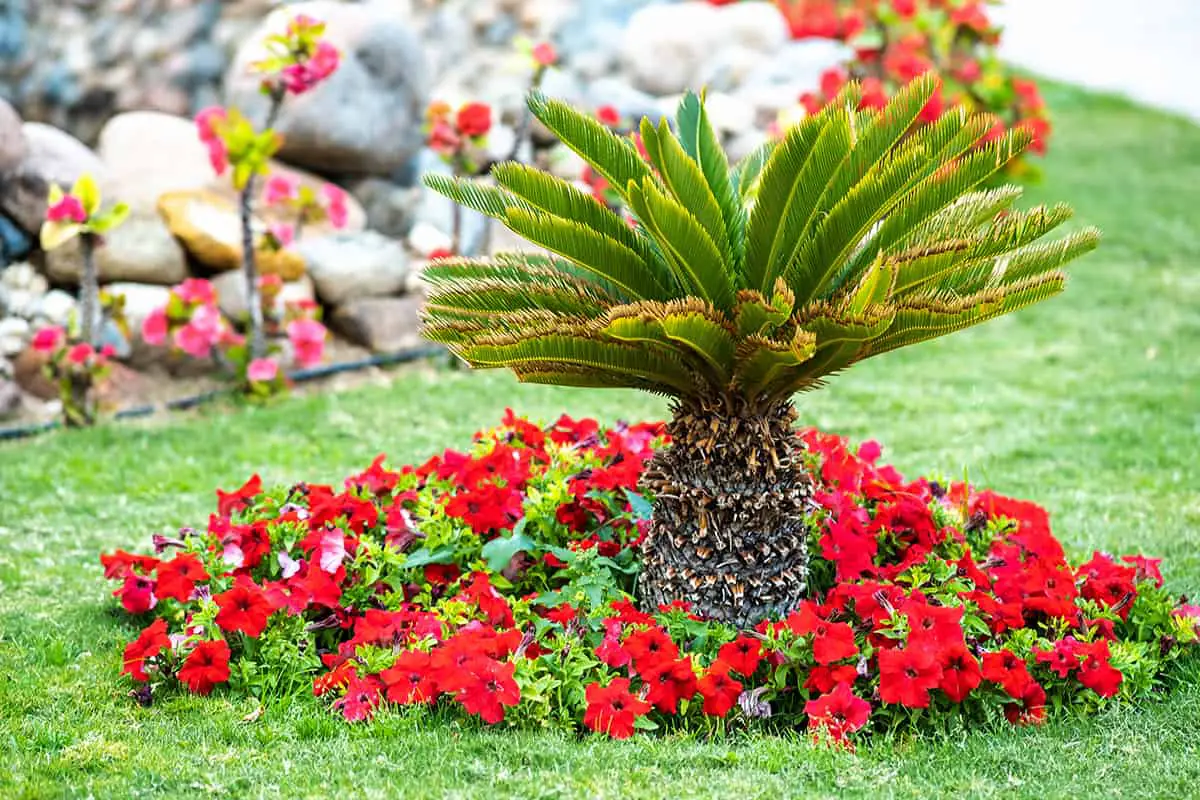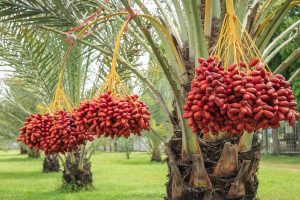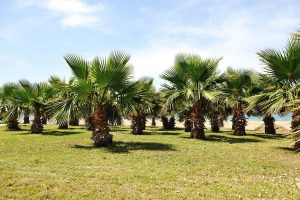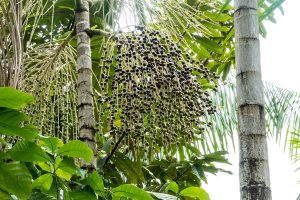For many of us, the mention of palm trees conjures up visions of a tropical paradise, with feathery fronds of green foliage fanning out at the top of a tall and slender trunk on the edge of a tranquil sandy beach.
However, there are actually over 2600 different species of palm trees, all belonging to the Arecaceae family, and many of these are, in fact, not tropical palms at all, and some of them do not even take the shape of trees and instead can be shrub-like or vine-like. Since there is such a huge variation between different species of palms, it should be no surprise to find that their growth rate can also vary enormously.
Palm trees can be slow growers or fast growers, and depending on the species, you can expect a palm to grow in height at a rate of as little as 3 inches per year or up to a maximum of 3 feet per year.
Table of Contents
Slowest Growing Palm Trees
Some of the slowest-growing palm trees in the world are also some of the rarest. This can be seen in some ways as survival of the fittest, as the majority (approximately two-thirds) of all palm trees in the world grow in rainforests. In these habitats, it is a race of which species can grow the fastest and become the tallest, and therefore occupy a space in the forest that can benefit from full sunlight.
If a palm grows too slowly in these circumstances, it will be shaded underneath the canopy of taller trees, and if it needs sunlight to survive, it will not stand a very good chance. This is one of the reasons why slow-growing palm trees are endangered or have not become widespread.
Another reason that some types of slow-growing palm trees are rare is the destruction of forests by humans. As these species grow so slowly, it takes a long time to replace them, and so other faster-growing species are favored.
Florida Cherry Palm Tree (Psuedophoenix sargentii)
One of the slowest growing types of palms is the Florida Cherry Palm, which is native to Mexico, the Caribbean, and a handful of the Florida Keys. It will typically grow at a rate of 3 inches per year until it reaches its eventual height of around 25 feet tall. It is now considered to be a critically endangered species in Florida, with a total of just 50 trees remaining on Elliot Key.
Kentiopsis magnifica
This palm grows natively only in New Caledonia, a collection of islands in the southwest Pacific. It is known to be exceptionally slow growing and will take at least 15 years to produce a trunk if this palm is grown from seed. The growth rate is typically a maximum of 3 inches per year, growing to an eventual height of around 80 feet.
Fastest Growing Palm Trees
Palm trees that hail from tropical regions of the world, such as the Caribbean, tend to be among the tallest and fastest-growing palm trees. This may be an evolutionary development in order to allow the species to survive under the threat of hurricanes and storms.
Small trees with shallow roots will snap or be lifted from the ground easily in strong winds. However, if a palm tree can quickly shoot up to its maximum height and develop a strong trunk, then it will stand a much better chance of surviving. If you want to grow some palm trees for shade fast, take a look at these.
Solitary Fishtail Palm (Caryota urens)

This is believed to be by far the fastest growing of all palm trees, gaining a whopping 7 feet in height per year. It reaches a total height of around 50 feet, taking just six years to get to this level.
The tree is native to a handful of countries in East Asia, including India and Sri Lanka. The fruits of this tree contain oxalic acid, which is an irritant causing a stinging sensation if touched or ingested. Interestingly, the tree will not flower and produce fruit until it is around 25 years old, and after fruit production, the tree will die.
Carpentaria Palm (Carpentaria acuminata)
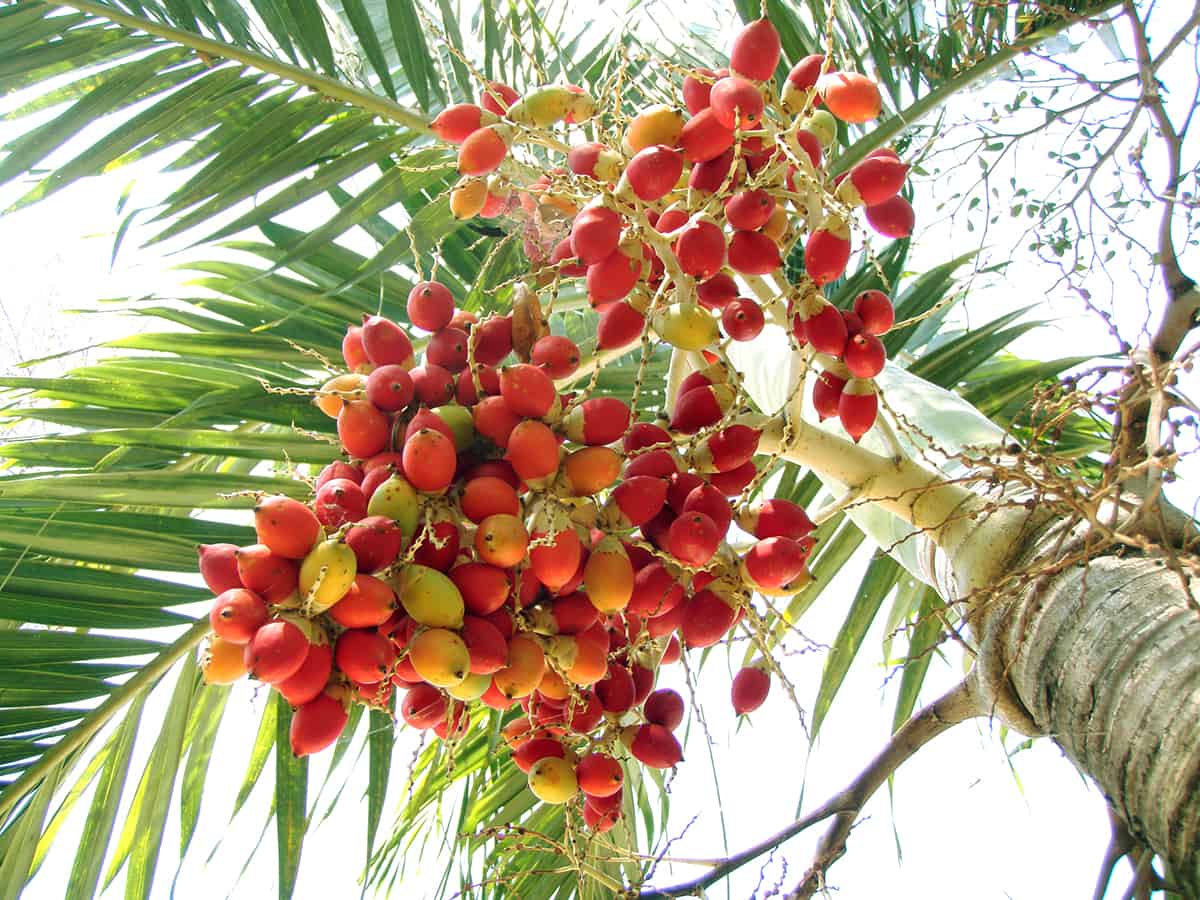
The Carpentaria Palm grows to a maximum height of 40 feet, at a rate of 3 feet each year. This means it will take, on average, just 13 years to reach its eventual height. This tree is native to Australia, where it prefers warm temperatures and wet conditions. The growth rate of the tree will be dependent on the growing conditions, so if grown in dry climates, then you can expect the annual growth rate to slow.
Queen Palm (Syagrus romanzoffiana)
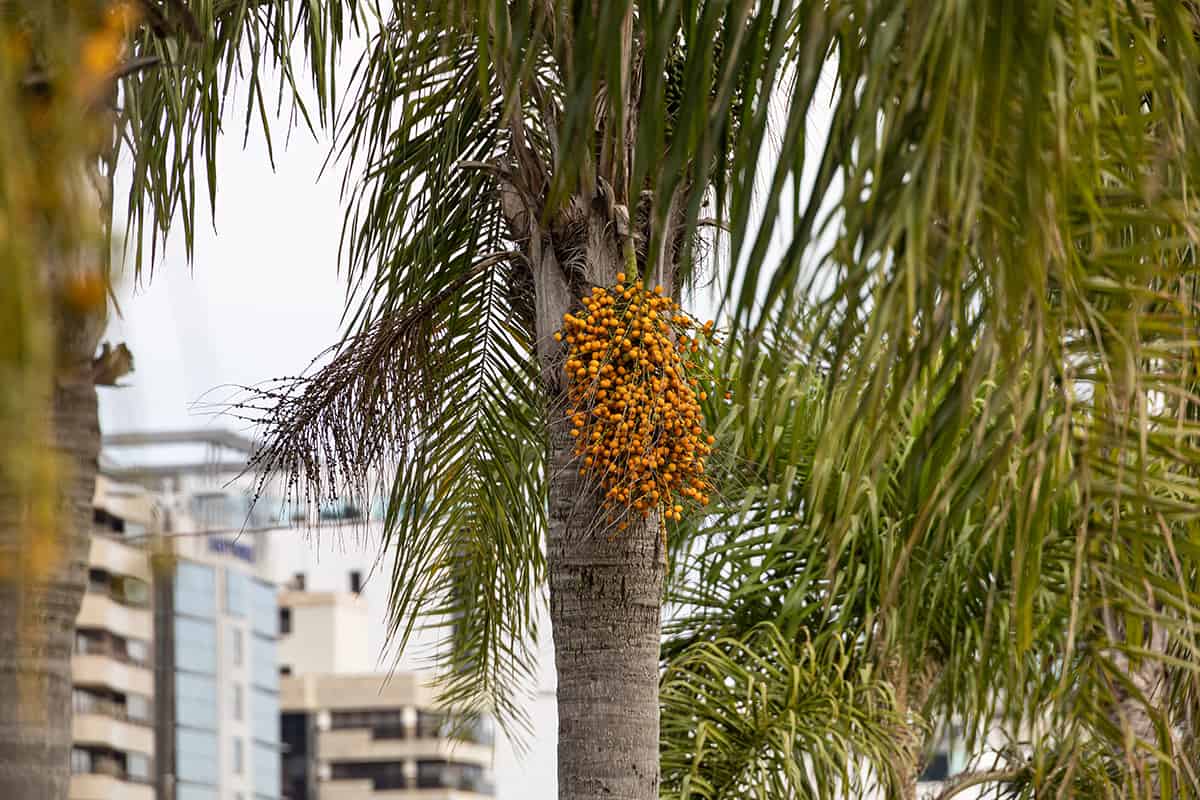
This palm is native to South America, where it will grow at a rate of around 3 feet per year until it reaches its eventual height of approximately 35 to 40 feet. These palms are popularly grown in the United States, preferring a well-draining soil and minimal salt.
How to Make Palm Trees Grow Faster
The maximum rate of growth of a palm tree is decided by its DNA, depending on its species, but of course, this means that there is room for the palm to grow at a slower rate. A palm tree will always grow the fastest in its natural habitat, as these are the conditions it is accustomed to and has developed to grow well in.
Therefore, you cannot force a palm tree to grow faster than it does in its native environment, but you can encourage it to try to grow at a similar level by mimicking its native growing conditions.
If your palm is growing slower than you expected, there are a number of things you can do to encourage faster growth.
Grow in the ground
A palm tree growing in a pot will typically have a slower growth rate compared to a palm growing directly in the ground soil. This is because the root growth is restricted by the bounds of the pot, limiting the plant’s overall growth. To see faster growth and a bigger eventual height, plant your palm in the ground soil of your yard rather than in a pot.
Use fertilizer
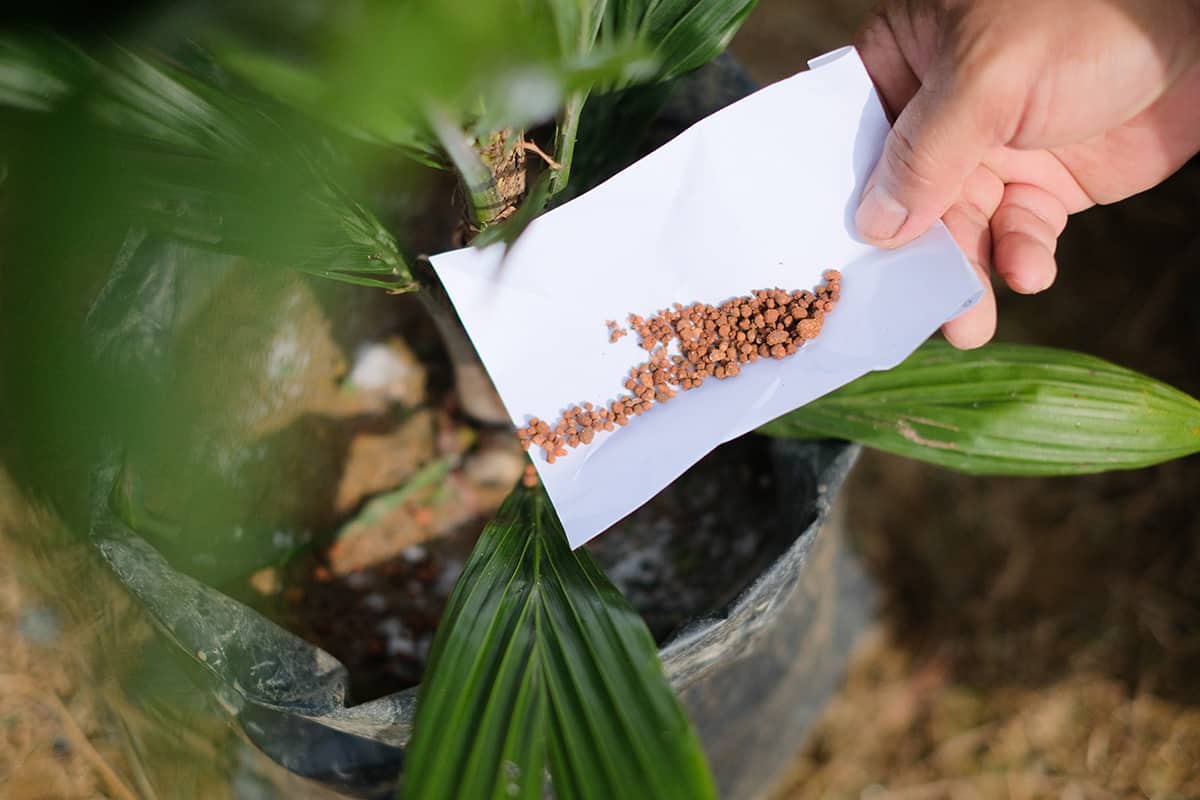
Many types of palm trees like to grow in soils that are not rich or nutrient dense. However, there are some fertilizers that have been specially developed to feed palm trees. Fertilizers that have been specifically designed for palm trees can provide the exact nutrients palms need to thrive, so consider using one of these if your palm isn’t performing well.
Allow more sunlight
Some palms enjoy the shade, but most need plenty of light to grow quickly. If your palm is in partial shade or dappled shade, move it to full sun exposure to help it gain height at a faster rate. If the palm is growing in the ground and this isn’t an option, you may need to cut back the taller trees around it so that more light can get through to the palm foliage.
Move outside
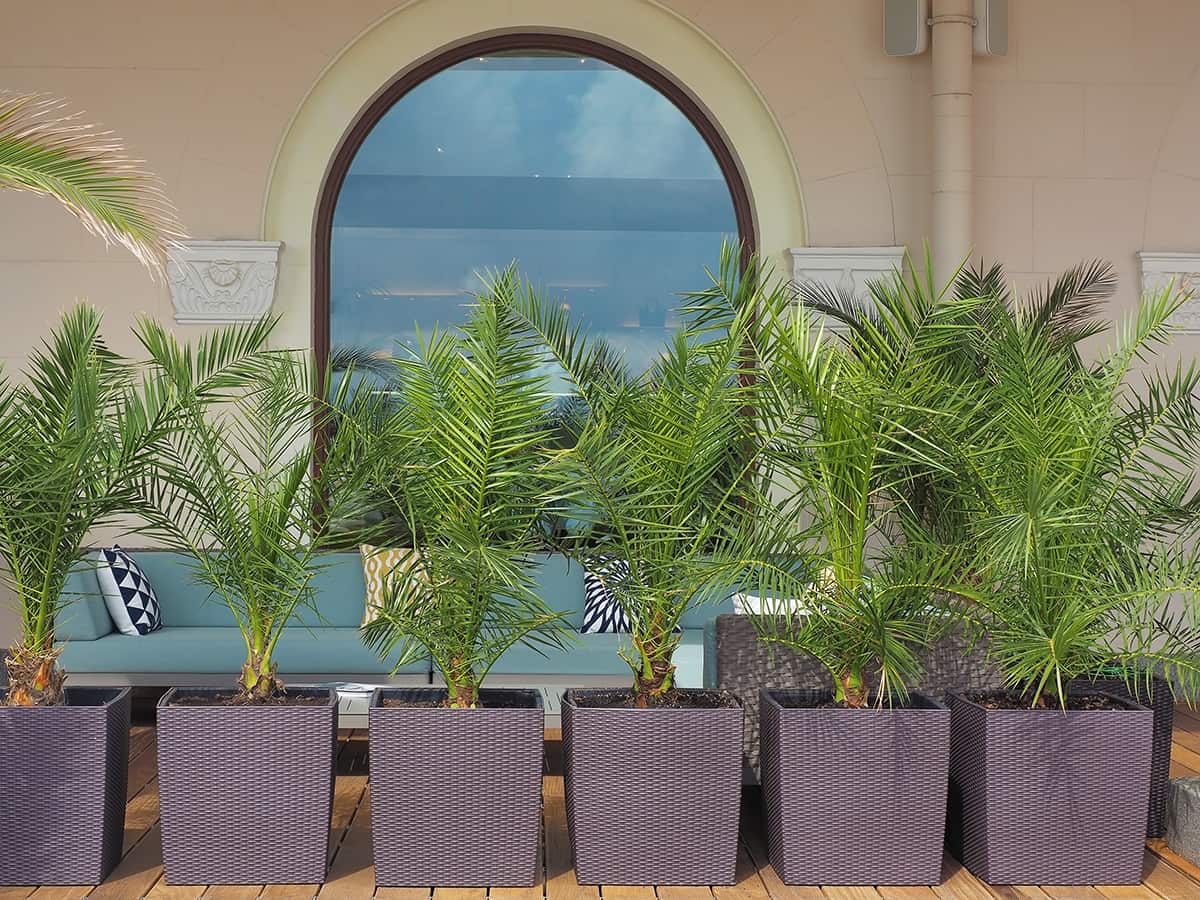
Palms will always grow best when they are outside, in a climate that is appropriate for them. If you are growing a palm as a houseplant in a cool climate, you can move it outside once the weather is warm enough in summer. This will help to boost its growth, and you can move it back indoors before the temperature falls again.
Water more heavily
The vast majority of palms are native to areas that experience heavy rainfall. They are accustomed to growing in wet conditions, where the soil is consistently moist and doesn’t get the opportunity to dry out.
If your palm is growing in dry soil, then the slow growth could be attributed to a lack of moisture. Try to water your palm more heavily in conjunction with allowing it more light to encourage it to grow at a faster speed.
